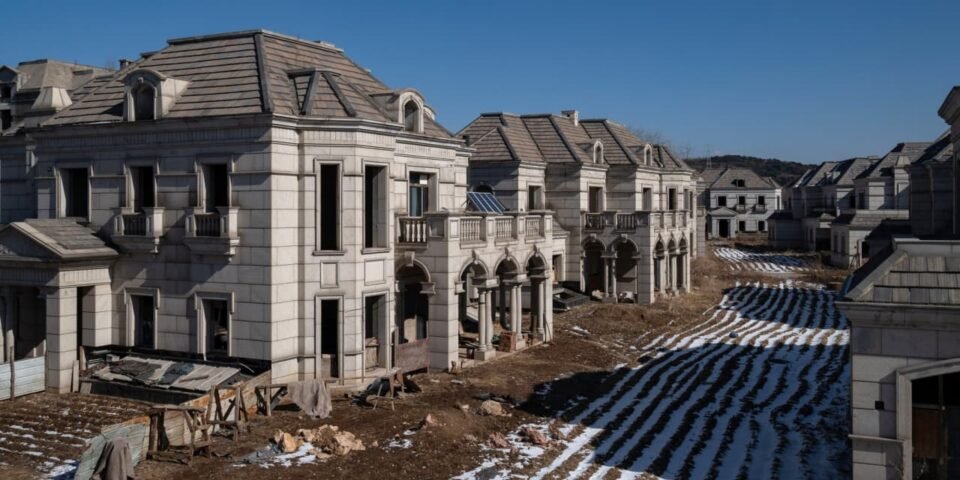There are many things haunting China’s economy these days, foremost among them the property market, which is a deflating bubble draining wealth from all corners of the country.
Housing prices and sales are falling, and with them the investments of Chinese, who are notorious savers who put most of their excess cash into property.
Developers are defaulting, and perhaps most infuriating to buyers, many have paid full price for units only to see them never finished.
But nowhere are things worse than the property market in lower-tier cities—places with relatively modest GDPs and no more than a few million people. Their biggest problem is glut—too many units with few prospective buyers.
The worsening of third- and fourth-tier cities accelerated at the end of 2020, when China’s housing market began to contract. Purchases slowed and a glut began to grow across the country—most severely in smaller cities.
Advertisement – Scroll to Continue
Investments for residents in third-tier cities are being pummeled because they hold a significantly larger share of their household wealth in property than residents in higher-tier cities like Shanghai.
“I’m one of the unlucky ones,” said Wang Liyun, a 36-year-old white-collar worker in the third-tier city of Langfang, between first-tier Beijing and second-tier Tianjin.
“I bought in early 2021, then prices began to fall. I’ll ride it out, and I have hope prices will swing back up. But I consider myself a smart financial person, so this will impact how I spend in other areas. This is the only rational reaction when your main source of investment falls.”
Advertisement – Scroll to Continue
Inventory clearing time is the most striking indicator of how much worse things have gotten for lower-tier cities. The metric is the area of already-built houses divided by the total area of units where a contract has been signed. In essence, how many units does a developer have versus how many buyers have agreed to purchase them.
In December 2020, clearing in all tiers was eight to nine months. Then unsold units in lower-tier cities skyrocketed, tripling by December 2023, nearly double that of higher-tier cities.
As of the most recent data, the time to clear housing inventories in lower-tier cities is now about 30 months, compared with eight months three years earlier, according to data provider Wind. The rate remains roughly half of that for higher-tier cities.
Advertisement – Scroll to Continue
The southern city of Shaoguan—on the cusp of the third and fourth tier with 2.8 million residents—has an inventory clearing time of 131 months, or 10 years, according to a survey by think tank E-House China Research and Development Institute.
Numerous factor are driving the weak demand and overcapacity in lower-tier cities, but chief among them are people moving to megacities seeking higher salaries, and the poorer quality of life and employment in smaller locales, said analyst Tianlei Huang of the Petersen Institute of International Economics.
While the statistics bureau only releases data on the amount of finished but unsold square meters, a rough calculation comes to about 8 to 10 million unsold units, most in lower-tier cities.
Advertisement – Scroll to Continue
One official late last year was surprisingly candid when interviewed by Chinese media. “How many vacant homes are there now? Each expert gives a very different number, with the most extreme believing the current number of vacant homes is enough for 3 billion people,” said He Keng, 81, a former deputy head of the statistics bureau.
This glut has myriad implications for China’s economy and the firms involved, particularly because lower-tier cities account for 80% to 90% of sales by area. Local governments, many of which have long been in debt for a number of reasons, rely on land transfers for revenue, which has dried up.
“The property downturn is likely to last for years, a long overdue correction in a sector at overcapacity. Sustained low land sale revenue will likely become the norm for local governments,” said Huang.
Advertisement – Scroll to Continue
Part of the problem is that a disproportionate share of construction continues to be concentrated in third-tier cities, according to research by Harvard’s Kenneth Rogoff and the IMF’s Yuanchen Yang.
S&P analysts said in a recent note they expect sales in lower-tier cities to drop an additional 9% in 2024, even as sellers reduce prices to offload units.
“You don’t dare buy now because prices will continue to fall. And you don’t dare sell because prices are low,” said Gou Liwei, who lives in a low-income area outside of Chengdu and has family in small cities across China, and who bought two additional properties years ago, before prices began to fall.
Write to editors@barrons.com

